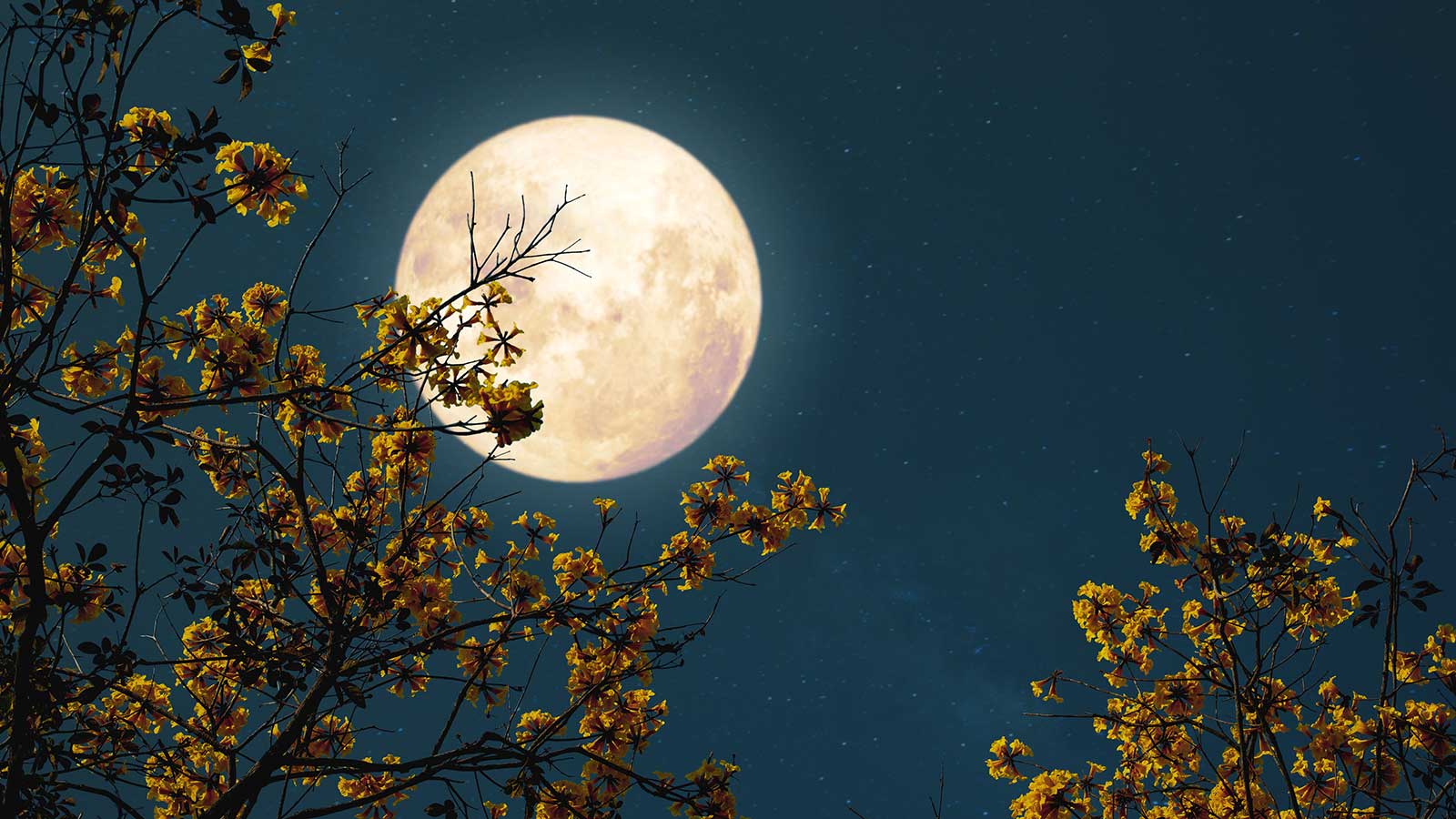
Gardening by the lunar phases is a concept that may seem questionable. However, this age-old practice is undeniably intriguing – and could be worth trying at home.
You may have heard of permaculture before; a sustainable, slow, and organic approach to gardening that works with nature, rather than against it. Gardening by the moon is similar in some respects: it encourages us to connect with the rhythm of the natural world, and plan crop-growing endeavors accordingly.
Followers of the theory claim it results in larger and healthier yields. So if you're growing a vegetable garden, perhaps consider giving it a go.
The theory behind gardening by the moon

The gravitational pull of the moon is a powerful thing, influencing the tides in our oceans. As Jessica Mercer of Plant Addicts explains, some people believe the moon can also draw water to the surface of soil, and even cause sap levels to rise in plants, depending on which phase it's in.
The theory goes that certain crops should be planted in correspondence to these different phases, for better results.
'These concepts have not been scientifically proven and many experts are skeptical that the gravitational pull of the moon has any effect on smaller bodies of water like plant sap,' Jessica says. 'Whether the reasoning makes sense or not, gardeners for generations have observed certain trends in plant growth during different phases of the moon.'
'Some swear by it, others prefer sticking to the basics,' says Anna Ohler, the owner of Bright Lane Gardens nursery. 'It's a fun twist to gardening if you're into it.'
How to garden by the moon

To try this method, you'll need to get familiar with the different moon phases. Note the difference between a waxing and waning moon, too.
A waxing moon is during the first and second lunar phases: the period where the light increases from a new moon (when it's no longer visible) to a full moon.
A waning moon is during the period where the light decreases from a full moon back to a new moon: the third and fourth phases.
- First phase (New Moon): The first and second lunar phase is said to be when moisture is being pulled upward. 'Plant above-ground veggies when the moon's waxing for leafy growth,' says Anna. Lettuce and spinach are good growing options for the first phase.
- Second phase (First Quarter): Keep planting above-ground crops. 'The extra light may benefit plants with seeds that grow on the inside of their fruit,' says Jessica. For instance, you may wish to plant peppers, tomatoes, and peas now.
- Third phase (Full Moon): 'After the full moon, the moonlight will begin to decrease, and water is thought to move downward in the soil,' Jessica says. This is the time to plant root crops and bulbs. Examples include potatoes, carrots, radishes, onions, parsnips, and garlic, Anna lists. 'This is also a good time to plant shrubs and trees that need to establish a strong root system,' Jessica continues. 'Harvesting and pruning are also recommended during the waning phase.'
- Fourth phase (Last Quarter): 'In the last quarter of the lunar cycle, moonlight is decreasing and plant sap is purportedly at its lowest level,' says Jessica. It's not recommended to plant at this time, she says – instead, prepare new beds, fertilize, compost, or just rest.
This calendar makes it easy to try gardening by the moon. It's a great gift for a green-fingered friend who's intrigued by the method, or to pin up in your potting shed.
It won't necessarily cause harm if you sow your plants and seeds without regard for the lunar calendar, says Diane Kuthy, the founder of How To Grow Everything. So, if you're just starting out with your vegetable garden, don't worry about the moon phases. 'However, it is a very interesting concept that you can experiment with if you are a more seasoned gardener,' she adds.

FAQs
Is gardening by the moon part of a biodynamic gardening approach?
Yes, gardening guided by lunar phases is often applied in biodynamic gardening, but there are other elements to the approach. These include crop rotation, composting, and what's known as biodynamic preparations, which include using specific types of herbs to improve soil health.
What is a moon garden?
Growing a moon garden is different from planting by the lunar phases. Instead, it is an outdoor space designed specifically to be enjoyed at night, typically with lots of white flowers, as well as night-blooming or night-scented plants.
If alternative vegetable gardening approaches interest you, consider looking into the Back to Eden concept, too – an organic method that's easy to adopt.







